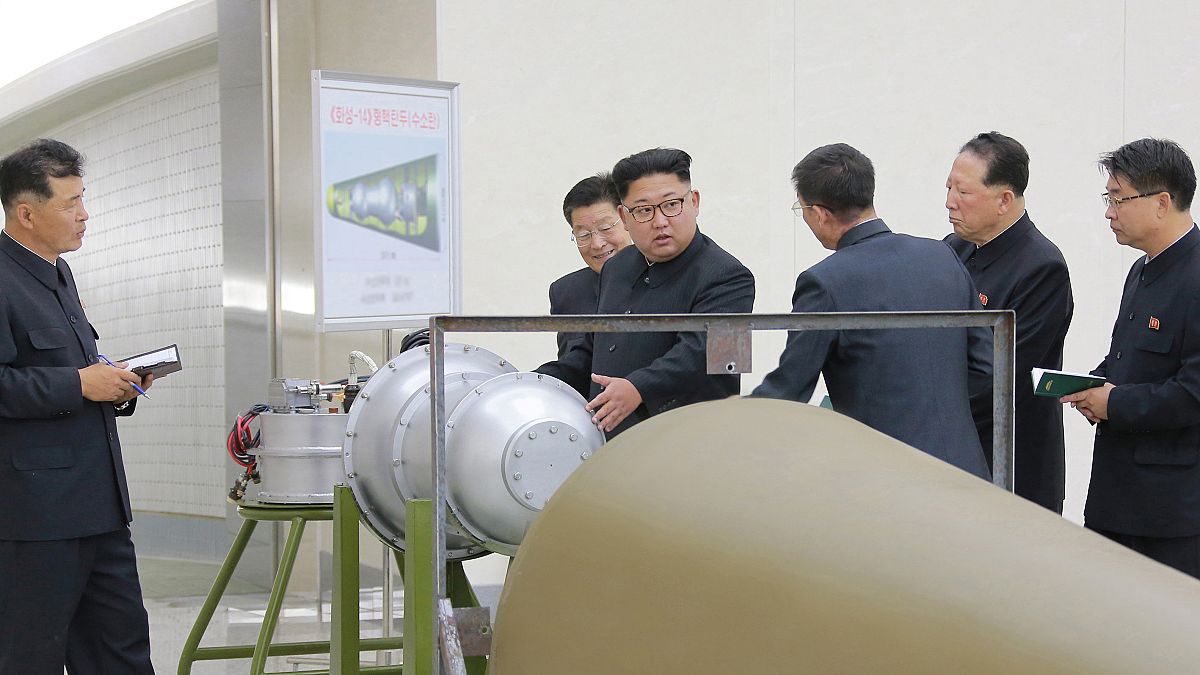South Korea carries out live fire military drills as the UN Security Council meets
South Korea says it is preparing fresh military drills with its ally the United States.
Seoul also says it is ramping up its ballistic missile defences in response to North Korea’s sixth and most powerful nuclear test.
South Korea’s air force and army conducted exercises involving long-range air-to-surface missiles and ballistic missiles on Monday.
More drills are being prepared with US forces in the south, according to a statement.
South Korea’s environment ministry officials have told reporters they are also to announce they will approve an environmental assessment report for the deployment of a controversial US anti-missile defence system.
Seoul said in June it would hold off installing the remaining components of the Terminal High Altitude Area Defense (THAAD) system until it completed the environmental assessment.
South Korea conducts live-fire exercise simulating attack on North’s nuclear site after Pyongyang’s H-bomb test https://t.co/HYzZMKVcJXpic.twitter.com/kwqCtvp0t4
— AFP news agency (@AFP) 4 septembre 2017
Why is this happening?
North Korea tested an advanced hydrogen bomb on Sunday.
Pyongyang has since said the test was for a long-range missile, prompting the threat of a “massive” military response from the United States.
North Korean state television said the test had been ordered by leader Kim Jong Un and was a “perfect success”.
The test registered with international seismic agencies as a man-made earthquake near a test site.
Japanese and South Korean officials said the tremor was about 10 times more powerful than the one picked up after North Korea’s previous nuclear test a year ago.
With a powerful nuclear bomb, North Korea’s Kim Jong Un dares China and the U.S. to stop him https://t.co/U7bOaygQB8pic.twitter.com/C27Fu451sn
— Bloomberg Politics (@bpolitics) 4 septembre 2017
But this is not the first time Pyongyang has tested a nuclear bomb?
No. Pyongyang tested two ICBMs in July that could potentially fly around 10,000 km.
This would put many parts of the US mainland within range. It prompted a new round of tougher international sanctions.
Hours before the latest nuclear test, North Korean state news agency KCNA released pictures showing Kim inspecting a silver, hourglass-shaped warhead during a visit to the North’s nuclear weapons institute.
KCNA said North Korea “recently succeeded” in making a more advanced hydrogen bomb. It says its weapons programmes are needed to counter US aggression.
So what is the US doing?
US President Donald Trump has asked to be briefed on all available military options, according to his defence chief.
Trump has previously vowed to stop North Korea developing nuclear weapons and said he would unleash “fire and fury” if it threatened US territory.
That prompted the North to threaten to fire missiles towards the US Pacific territory of Guam, although it has since appeared to back away from that threat.
The United States is considering, in addition to other options, stopping all trade with any country doing business with North Korea.
— Donald J. Trump (@realDonaldTrump) 3 septembre 2017
Diplomatic “hand-wringing”
The size and scope of the latest test set off a new round of diplomatic handwringing after weeks of profound tensions over North Korea’s nuclear programme.
Chinese President Xi Jinping and Russian President Vladimir Putin, who met on the sidelines of a BRICS summit in China, agreed to “appropriately deal” with North Korea’s nuclear test, according to China’s official Xinhua news agency.
As North Korea’s main ally, China said it strongly condemned the nuclear test and urged Pyonyang to stop its “wrong” actions.
What about the UN?
The United Nations Security Council is meeting on Monday to discuss fresh sanctions against Pyongyang.
There is a lot of tough talk from the international community. However, the immediate focus of the international response was expected to be on tougher economic sanctions against Pyongyang.
Diplomats say the UN Security Council could now consider banning Pyongyang’s textile exports and the North’s national airline, stop supplies of oil to the government and military, prevent North Koreans from working abroad and add top officials to a blacklist to subject them to an asset freeze and travel ban
IAEA Director General issued video statement following #NorthKorea’s nuclear test https://t.co/cW8XJC7Fja#DPRK
— IAEA (@iaeaorg) 3 septembre 2017
The Business
Japanese and South Korean stock markets were both down modestly on Monday.
Safe-haven assets including gold and sovereign bonds ticked higher, but trade was cautious.
South Korea’s finance minister vowed to implement policies to support financial markets if instability caused by the latest test showed signs of spreading to the real economy.
“We are aware that there could be negative ripple effects should geopolitical risks surface,” Kim Dong-yeon said in a policy statement.
What they are saying
“Any threat to the United States or its territories, including Guam or our allies, will be met with a massive military response, a response both effective and overwhelming,” – US Defence Secretary Jim Mattis
“If countries want to do business with the US, they obviously will be working with our allies and others to cut off North Korea economically,” – US Treasury Secretary Steve Mnuchin said in a television interview.
“Assuming the worst on the Korean peninsula has not proven to be a winning trading strategy this year,” – Sean Callow, senior forex strategist at Westpac Bank.
